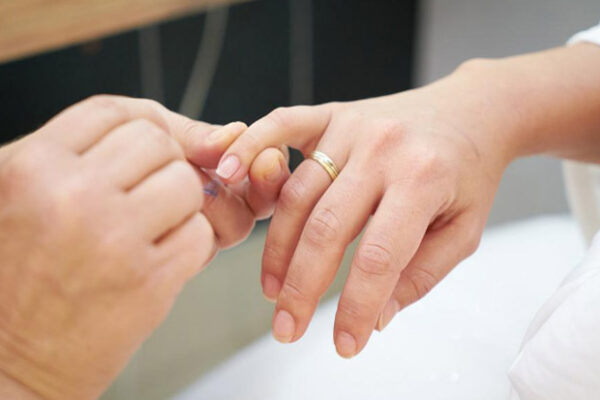We should follow some golden rules after tanning. If we tan, we should formulate a reliable beauty system to make your skin more charming. How long can tanning last? How can we prolong the tanning time? Please Keep reading!
How Long Can Tanning Last?
Natural tanning usually lasts for about 7-10 days, although this may vary according to different skin types and colors. However, in these 7-10 days, any exposure to the sun may mean that you will spend more time tanning, so the tanning time really depends on the individual. If you live in a warmer climate, this time scale is not necessarily applicable, because regular exposure to the sun will keep your skin fresh and “Plumper”. It’s not just about boasting that you have recently gone to the beach. It’s a way for your body to protect itself from the large mass of radioactive substances in the sky, especially UVA rays (rays that accelerate aging) and UVB rays (which cause sunburn). However, since the skin naturally falls off and generates millions of cells every day, once you return to the gray sky, the average life span of your tanned skin to your equipment is only about 7-10 days.
How Can I Keep Tanning Longer?
If you want to keep your golden light as long as possible, you can take some simple steps. These steps include:
- Gently exfoliate once a week – you still need exfoliation to help remove dead skin cells, which may cause the skin to look darker.
- Regular moisturizing – this helps keep skin soft, hydrated and prevents peeling. After staying in the sun for a period of time, you can use many moisturizing products.
- Take a cold bath – taking a hot bath will make your skin cells fall off faster, so change the hot bath to a cool one!
- Drink water – water helps keep skin cells hydrated, thereby extending their life span.
- Eat rich β- Carotene foods – these foods include red orange pigments, such as sweet potatoes, carrots, apricots, and mangoes.
- Wear sunscreen all year round – this will protect your skin from the sun. At the Tropical Hotel in Hawaii, our sunscreen contains skin friendly ingredients, such as shea butter, which can help keep skin soft and fresh.
Tanning Preparation and Maintenance
The key to extending the tanning time is to start before you tan. Scrubbing already milky skin may backfire, but exfoliation helps remove old skin cells so that the sun can shine on new cells at the beginning of their life cycle. Even after you return through the channel, continue to exfoliate every two to three days to avoid dead skin accumulation and make the skin look dull and dim. Don’t worry, it won’t speed up your recovery of the original tone.
- Ensure Tan Safety
This temptation, especially if you only leave for a week, is to lie on the sun couch and Tan until you look like an old parchment. However, cooking yourself alive is not a good way to become a cover model.
In order to avoid looking like lizard people, according to your skin color, it is best to use broad-spectrum SPF (an SPF that can resist both UVA and UVB rays), between 30 and 50. Anything below 15 is as useful as a concrete parachute.
- Cooling
After returning from sunny weather, everything will feel a little cold, which makes most people turn up the temperature knob of the shower to make their skin feel warm again. Although it feels good, approaching scalding water is bad news for tanned skin. It destroys the natural barrier function of the skin and removes all oils in the body that help lock in the new Sicilian hue.

What Tanning Bed Should I Choose?
No type of tanning is completely safe, but tanning beds and stalls are particularly unsafe. UVA radiation intensity in tanning bed is three times that in natural sunlight. The international agency for research on cancer (IARC) of the World Health Organization classified tanning beds as carcinogenic to humans. Tanning beds and sheds should be avoided.
No type of tanning is completely safe, but tanning beds and stalls are particularly unsafe. UVA radiation intensity in tanning bed is three times that in natural sunlight. The international agency for research on cancer (IARC) of the World Health Organization classified tanning beds as carcinogenic to humans. Tanning beds and sheds should be avoided.
Once your body stops producing melanin, your skin will maintain the color it has formed and will not “lose” color or fade in any way. In fact, the loss of tan just comes from the natural exfoliation process that occurs in the skin to “Refresh” it. As you may well guess, for the average person, the whole exfoliation cycle takes about 7-10 days, but it may vary depending on personal and surrounding conditions.
For most people, they find that their skin has not completely disappeared in these 7-10 days, and you can lose your skin at different stages. Usually, you will find that when you tan, your holiday skin will show obvious luster in two to three days, but at the same time, sometimes it even takes a month to completely Tan, especially when you return to sunny weather.
If you are looking for ways to prolong your tanning life and what products you may use to achieve this goal, you will be glad to hear that there are many choices for you! Read on and find out some additional tips and tricks for your naturally beautiful skin.
Precautions After Tanning
- How to take a bath
Keep cool during shower and use products that pay attention to hydration. If they don’t appear in your beauty library, stock up on body lotions rich in skin care ingredients such as aloe vera, shea butter, and jojoba oil.
- Keep your body moist
When you leave, once you return home, the most important step is to keep your skin smooth. This means moisturizing cream. Many moisturizers.
Why Has My Skin Been Sunburned for So Long?
Although some products are designed to help the skin gain a deeper luster, it is worth noting that tanning is a direct result of ultraviolet rays (especially UVA rays), which penetrate the lower layer of the skin and produce melanin, which helps to prolong the tanning time.
This melanin is where brown skin works. Because of how tanning is formed, the length of tanning can vary according to a person’s skin type.
Depending on your skin type and the overall impact of the product you use, your tanning may last longer.
Will Tanning Disappear By Itself?
Tanned skin can be preserved and may extend to more than 10 days, but in general, they do leave by themselves. Although tanning can last for 10 days, the average time of tanning is between 7 and 10 days. After this time, the skin really began to regenerate through self exfoliation. Our skin is constantly regenerating. A good example is a wound or scratch.
The skin begins the regeneration process to repair the skin. It’s not very pleasant to think of it, but tanning is a form of skin damage, which is a new label. To some extent, all ultraviolet rays can cause slight damage, even when the skin turns dark. After tanning, the skin begins to regenerate to help regenerate new skin cells. Once again, everyone’s skin pigment and the level of melanin they can produce and maintain are different.
Because of this difference in everyone, one person may Tan longer than another. This is not to say that it will never disappear. Our skin always wants to regenerate, so eventually, it will disappear. Tanning is the most natural way of tanning. In the care of suntanned skin, using appropriate lotion and concentration, it is possible to have beautiful sunshine skin.
However, some people take other measures to tanning, including spray tanning or using tanning beds. Some people even think that these methods are a way to keep the skin tanned. Spray tanning will not last long, because they are literally colored and sprayed on the skin to make the appearance tanned. In addition, tanning beds are notorious for their artificial lighting and bad reputation. Although tanned skin will eventually disappear, it is important to try a natural way to maintain the beauty of tanned skin. Through the above methods, this can be achieved and help you enjoy tanning as long as possible!





